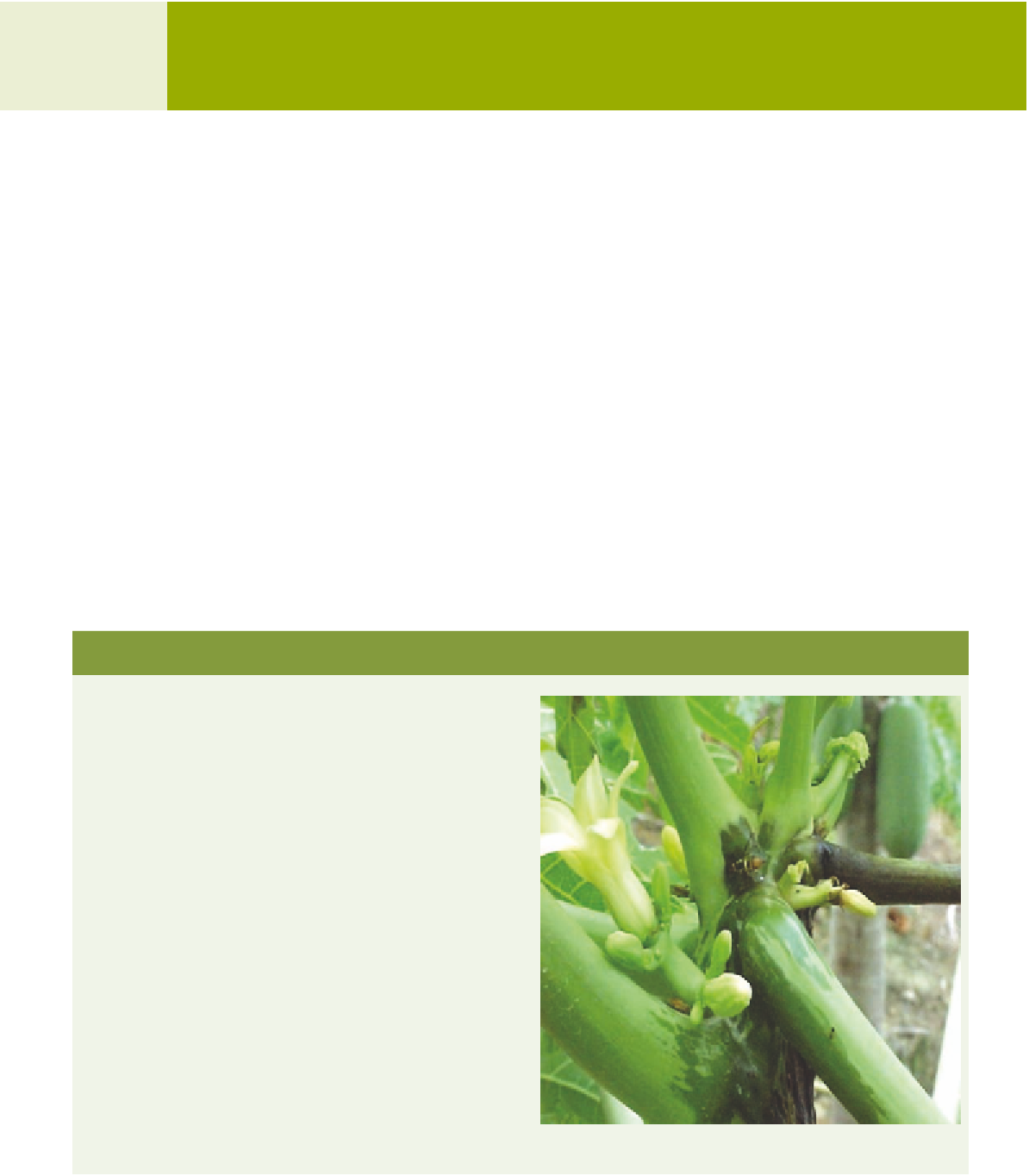Agriculture Reference
In-Depth Information
14
PAPAYA ( PAPAW )
(
Carica papaya
)
P a p a y a i is a r a p i d l y g r o w i n g p e r e n n i a l h e r b a c e o u is p l a n t
producing large f leshy fruit. It is a member of the
Cariaceae family and originated in Central America.
Papaya is grown widely throughout the lowland tropical
and subtropical regions of the world where it is mainly
used as a fresh fruit. In Australia, most commercial
production is on the tropical coast and the Atherton
Tableland of north Queensland.
Papaya is propagated by seed and the varieties are either
gynodioecious or dioecious. The former bear female and
hermaphrodite f lowers on separate plants and have stable
horticultural characters from generation to generation.
Dioecious varieties form male and female f lowers on
separate plants and are better able to tolerate seasonal
f luctuations in subtropical areas. Outcrossing in these
types results in considerable variation unless the parent
lines are well-maintained or the variety is cloned by tissue
culture.
Papaya is very sensitive to frost and requires well-drained
soil, because waterlogging favours soil-borne root
diseases.
Several diseases can limit production severely, including
dieback and Phytophthora diseases.
BACTERIA AND
PHYTOPLASMAS
BACTERIAL DECLINE AND CROWN ROT - BIOSECURITY THREAT
Cause
The bacterium
Erwinia papayae
.
Symptoms
Early symptoms include yellowing and death along leaf
margins followed by the development of water-soaked
lesions at the base of petioles, crowns and along the
midribs of leaves.
Lesions girdle the petioles, causing leaves, particularly
those at the top of the canopy, to wilt and hang
downwards. As the disease progresses, downward
bending becomes marked, giving plants a skirting
effect.
The f flesh of fruit is water-soaked and dark spots develop
on the skin.
Water-soaked, dead areas develop on the stem and
spread into the internal tissues. Secondary fungal
infections may occur with the plant declining and
eventually dying.
Fig 14.1 Symptom of bacterial decline showing water-soaked
lesions at the base of petioles.












